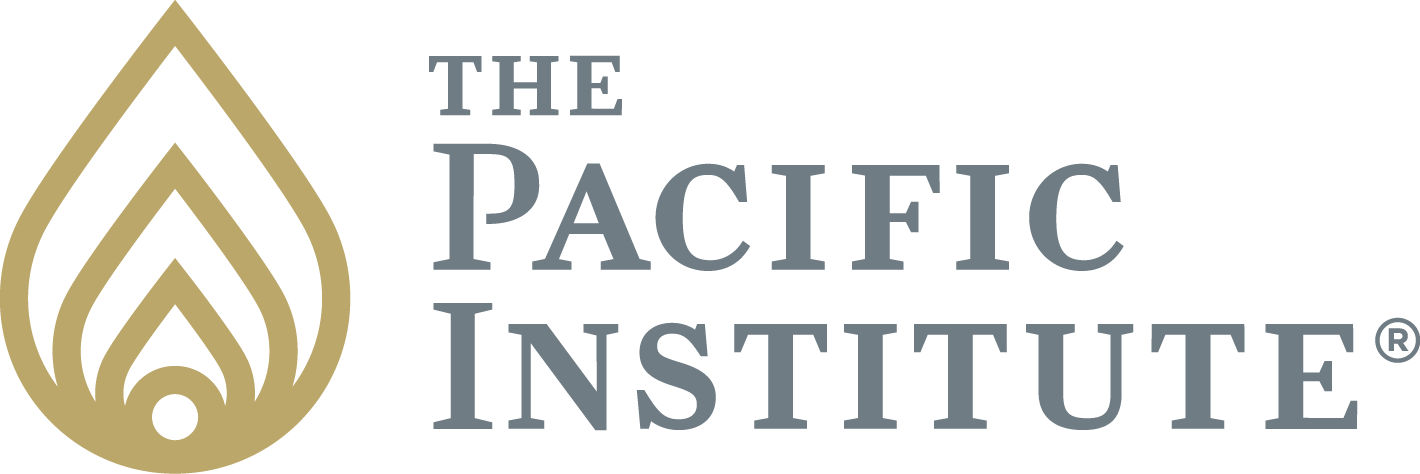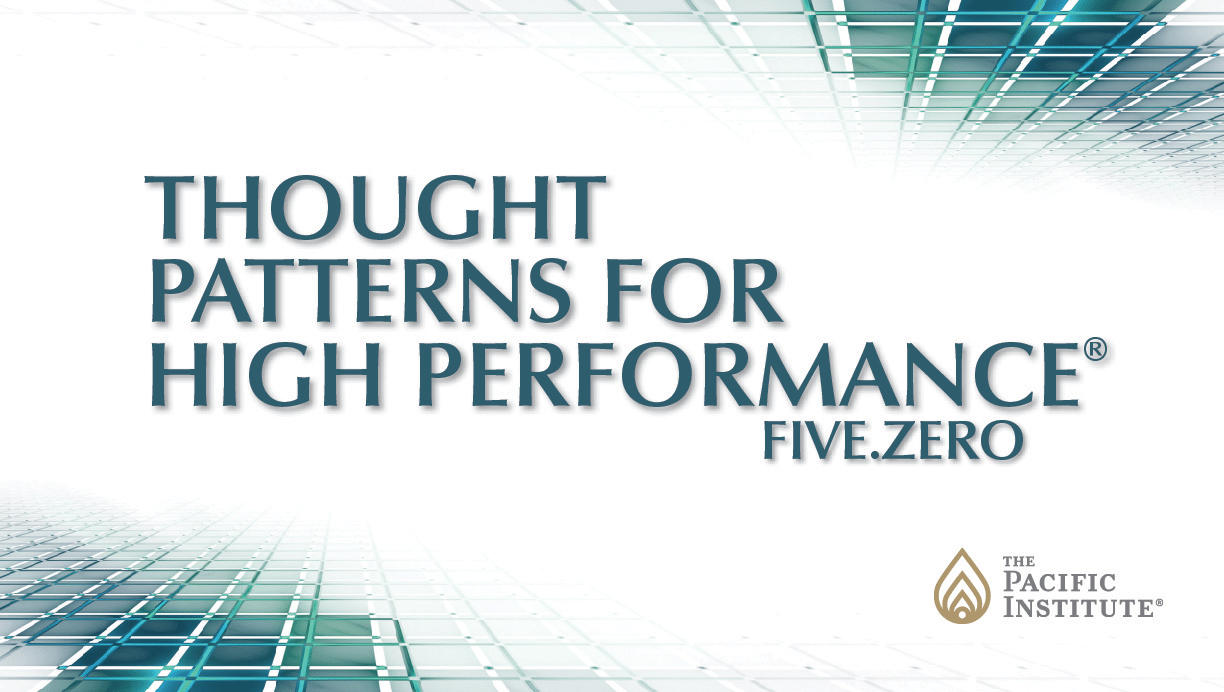As the co-founder of The Pacific Institute and mentor to both Joe Pace and myself, Lou Tice challenged us and those around him to answer simple questions before beginning: “So what? Who cares? What difference does it make?”
In the newest Thought Patterns for a Successful Career® series, we begin the curriculum by setting up the purpose and intent for the students who take the curriculum by answering the Why, What, How, and Who of its importance for both their academics and their subsequent career.
With the release of the newest curriculum slated for early 2015, we hope to use the newsletter to offer a taste of each of those segments.
Why is The Pacific Institute curriculum and this course instrumental to the successful completion of your education?
- In a University of Pennsylvania study: “Self-discipline predicted academic performance more robustly than did IQ. Self-discipline also predicted which students would improve their grades over the course of the school year, whereas IQ did not.” The conclusion: “Self-discipline has a bigger effect on academic performance than does intellectual talent.” [Charles DuHigg]
- In a study conducted at West Point, researchers found that grittiness—which they defined as the tendency to work, “strenuously toward challenges, maintaining effort and interest over years despite failure, adversity, and plateaus in progress,”—is a more accurate predictor of college grades than IQ or standardized test scores.
- With more than 137,000 current employees and more than one million alumni, Starbucks is one of the nation’s largest educators. At the core of their education…Willpower. They have identified it as the cornerstone habit for individual success. [Duhigg, Charles (2012-02-28). The Power of Habit: Why We Do What We Do in Life and Business (p. 131).]
Business students rarely, if ever, fail because they lack the aptitude, or capability of learning the material; rather they lack the Self-Discipline to attend classes or log-in daily, turn in the assignments when due, or make studying a daily habit. The grit to keep going during tough times, like juggling finances while going to school, handling family obligations, relying on various or inconvenient modes of transportation, wading through technical difficulties, balancing childcare, and possibly lacking a strong support group. The willpower when faced with a subject that’s difficult, a teacher that’s not the greatest, or other students who are distracting rather than cooperative partners in education. Or, just the willpower to get done what needs to be done when needed. Through the goal-assimilation process of completing their education, our students will learn how characteristics like self-discipline, grit, and willpower are natural by-products of deliberately and intentionally growing themselves into their goals.
What result should our students expect from the understanding and application of this curriculum?
• Albert Einstein cautioned, “We should take care not to make the intellect our god; it has, of course, powerful muscles, but no personality. It cannot lead, it can only serve.”
Researchers and authors Daniel Goleman, Richard Boyatzis, and Annie Mckee analyzed data from close to 500 competence models from global companies (including IBM, Lucent, PepsiCo, British Airways, and Credit Suisse First Boston), as well as from healthcare organizations, academic institutions, government agencies, and even a religious order, to determine which personal capabilities drove outstanding performance within these organizations.
They grouped capabilities into three categories:
- Purely technical skills such as accounting or business planning
- Cognitive abilities such as analytic reasoning
- Traits showing emotional intelligence, such as self-awareness and relationship skill
Their findings hold that emotional intelligence contributes 80 to 90 percent of the competencies that distinguish outstanding from average. Emotional intelligence is based on elements that include:
- Self-regulation. As human beings we self-regulate at our belief level, not necessarily our potential level. Our intention is to help our students self-regulate much closer to their true potential.
- Self-awareness. In order to make the changes, adjustments, or modifications needed to achieve our goals, it is first necessary to truly become self-aware of our starting point in relationship to that goal. Our intention is to help our students understand what might be blocking them, what might they have locked onto, or possibly the habits, attitudes, or beliefs that no longer apply to the person they intend to be.
- Motivation. The drive, desire, and passion that comes with having a clearly defined and accurate purpose. Goals that excite then help us put life on a want-to, choose-to, love-to basis rather than feeling like we are coercing or forcing ourselves. It is our intention to show our students how we can use our mind most effectively to grow ourselves into our goals and not throw ourselves into them.
- Empathy. The capacity to put yourself in someone else’s shoes, being able to see from the other person’s perspective, having a good grasp of your own emotions, and being considerate of others’ emotions. It is our intention that our students are able to understand how historical memories, negative emotions, and hurtful self-talk inhibit the release of their potential.
- Adeptness. The commitment and dedication to becoming highly skilled and proficient. It takes effort, energy, practice, self-discipline, grit, and willpower. It’s the application of the soft-skill abilities (EQ) that allows our students to release the potential of their hard skills (IQ).
It is our intention that our students not only understand how the mind works—the process of setting and migrating toward their goals—but also it is our intention to compel our students to apply that knowledge to their lives. How do we intend to deliver The Pacific Institute curriculum? We are going to lay out scientific research, psychological concepts, and timeless principles in concise, dynamic segments with a menu of options for students and faculty to choose. Following each segment, students will be presented with application ideas, reflective questions, and exercises in order to put the concepts into practice.
How do we intend to get our students to practice?
We’re going to continually encourage our students to have a growth mindset, not a fixed mindset to release their potential.
Building on the research of Dr. Carol Dweck, out of Stanford University, who describes the fixed mindset as the consuming goal to prove oneself over and over, many of our students may be operating with the belief that their intelligence, personality, and qualities are carved in stone, never to be changed. Every situation becomes a reaffirmation of their personality, character, and intelligence. With a fixed mindset, they have locked onto the idea that every situation is evaluated as, “Will I succeed or fail? Will I look smart or dumb? Will I be accepted or rejected? Will I feel like a winner or a loser?”
On the other hand, the growth mindset is quite the opposite. It is based on the belief that our basic qualities are things that can be developed through our efforts. Effort is the ultimate key, and effort doesn’t take aptitude or intelligence; it only takes willingness.
In a fixed mindset, effort is seen as a sign of weakness. The fixed mindset is full of scotomas, blind spots, that block the release of our potential. As Dr. Dweck emphasizes, the perception of that fixed mindset is that if the world sees me as putting forth effort, I must not be smart, I must not be capable. With the growth mindset, the belief is very different. Everyone can change and grow through application and experience. Effort, effort, effort.
With the assistance of the latest scientific research, we hope to get students to consider the growth mindset based on the ways we know our brain can change. Dr. Michael Merzenich, often called the Father of Brain Plasticity, explains plastic brain change as the process by which a skill is developed. We take in information through our senses, which is translated into electrical impulses that engage the brain, subsequently the brain creates specific neural pathways until it becomes stronger, faster, more reliable, and more specific to each new task.
Because our brain is plastic, not carved in stone, we can rewire, which means we can learn, unlearn, and relearn. How do we do that? By creating circumstances which are largely within our control by paying careful attention, focusing on a task or goal and positively evaluating our performance in a goal-directed behavior.
Our students have decided that further education is necessary for the job they want, the income they want, and the life they want. As the proceed through the curriculum, they will learn that if their goals stay within their attention, if their goals have their focus, and they have the self-discipline to practice and assimilate the information in the course, their brain will be on board.
Who will be affected by the outcome of the understanding and application of The Pacific Institute Thought Patterns for a Successful Career curriculum?
We hope it is three-fold, as an individual, as a student, and as professional.
Our students will see personal growth in many areas, including their relationships with their family and those they care about most, but more importantly, in how they speak to themselves, how they speak to others, and how they apply the goal-setting and assimilating in all areas of their life.
Friends and family will see a change in our students as they become more confident, self-assured, and deliberate in their thoughts and actions.
Through an understanding of how the mind works and by deliberately putting it into action, our students will begin to cause goals in all areas of their lives.
Students have chosen to return to school most likely for many reasons, with the idea of a new career, new income, possibly a promotion or more responsibility, but ultimately with the expectation of a better life for them and their family.
They have enrolled and they have been accepted. Therefore, they are capable from an aptitude standpoint. When many of our students do not succeed in getting the education they intend, it’s not the hard skills, the aptitude, that fails them, but rather the soft skills. We need to focus on helping them become more comfortable with the new person that they intend to be. As the education and process unfolds throughout this curriculum, we will push them to apply it, encourage them to continually keep the goal of their education solidly in front of them, and stay focused while paying careful attention to where they are going. Unfortunately, life happens, adversity and obstacles will show themselves along the way. However, students will know that the creativity, effort, energy, drive, and problem-solving to overcome, get around, and go through these obstacles will come. Solutions will come not because they need to know “how” they are going to get past those obstacles at this very moment, but by keeping the goal of an education in front of them. They will create the how!
The technical, analytical skills that our students receive through our schools satisfies the price of entry in their fields of study, but those skills alone do not make them superior in terms of performance. It is the understanding and application of their soft skills—their emotional-intelligence abilities—that will propel them through their education and their career.
The application of the curriculum and process that we’ll unfold for our students depends mostly on their soft skills. It is our intention that through the understanding and repeated practice of the principles in the segments of the Thought Patterns for a Successful Career® curriculum that our students will grow as individuals, as students, and as professionals.
We are honored and excited to guide our students through this process.
Thought Patterns for a Successful Career® is a registered trademark of The Pacific Institute®, Inc. Seattle, WA USA.


